In my last post, I explained that I was mainly discussing the “lower end” of the commercial sex market. There are many reasons I focus on people who trade sex at the “lower end” of the market: they have least options when it comes to viable economic alternatives; they are most vulnerable to violence, exploitation, and arrest; “end demand” policies tend to employ strategies that impact them (and their clients) the most; and they are more numerous than sex workers at the opposite end (i.e. high-class courtesans and call-girls).
In limiting my discussion to this sub-population of people in the sex trade, I am making an assumption, which I think matches casual observation, that there are at least three distinct class- and economically-based segments to the sex trade. They are distinct in the sense people who trade sex rarely switch back and forth between different segments (though they may occasionally move between them), and tend to compete for different groups of clients (johns), who do not usually cross over either.
The “lower end” segment is characterized by low (or no, or even negative) downward elasticity of supply, as I explained in my previous post. This category is not necessarily restricted to those who appear worst off under objective measurements: they are not necessarily homeless, drug-addicted, mentally troubled, unable to find other work, etc. It simply means that they do not have economic alternatives they consider viable, which may be different for each person depending on her or his circumstances and priorities.
The supply and demand chart for this group would show steep, vertical, or even reversed supply curve, as discussed in my previous post.
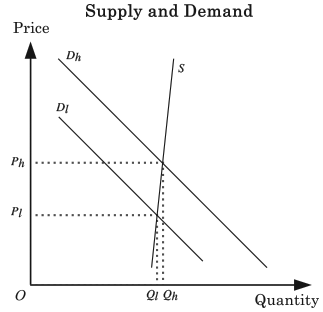
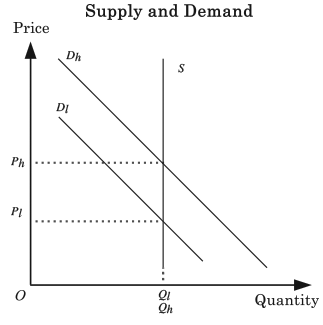
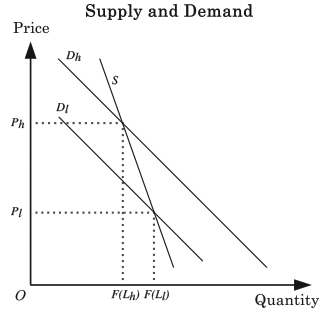
The second segment is the market in which supply elasticity is relatively high. People who trade sex in this segment of the commercial sex market often have other sources of income (e.g. students who are financially supported by their parents) or have other economic opportunities, but engage in the sex trade for extra income, spare time, or other perks. Because they have other viable economic options and also because they have more to lose when things go wrong, they exit the market when the price for commercial sex drops below what they expect to be compensated for in exchange of risks (legal, physical, health, social/reputational) and uncomfortableness associated with the sex trade.
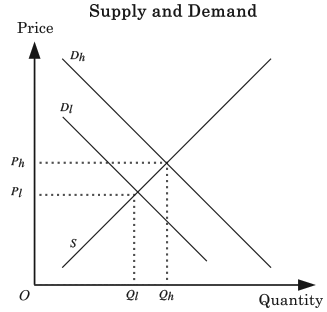
The supply and demand curves for this segment most closely matches what proponents of “end demand” policies might imagine, but their policy proposals won’t be effective even for this particular segment. It is because “end demand” policies focus on the prosecution, which tend to target the lower end of the market rather than the middle market where artificial reduction in demand might actually make a difference (people in this market segment prioritize safety and discreteness more than those in the lower end because they have more to lose, and are therefore harder for the law enforcement to identify). Further, even if they could successfully reduce supply within this segment, they are only reducing optional, freely entered, consensual commercial sexual transactions, and not sex trafficking or sexual exploitation of vulnerable populations.
Finally, there is a much smaller luxury market of commercial sex, which is made up of high-class call-girls (and boys) and their elite/wealthy clientele. This market is characterized by the exclusivity on both supply and demand sides, which make them unresponsive to minor fluctuations in the market forces–that is, elasticity is low for both supply and demand. It is difficult to chart this segment because clients might have (and are able to insist on) more specific preferences for a particular sex worker or sex workers, making each “product” (i.e. commercial sexual service) unique. But for the sake of comparison, the supply-demand chart might look like this:
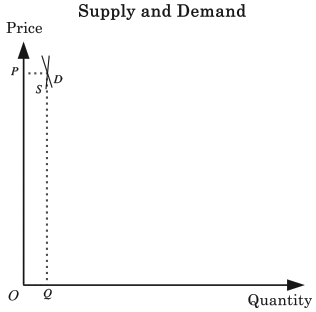
I did not even attempt to draw “high demand” and “low demand” scenarios because “end demand” policies are unlikely to have any impact in this segment of the prostitution market. There are highly publicized cases of high-class prostitution rings being busted or famous politicians, business executives, or celebrities being caught in “sex scandals” involving high-class escorts, but they are exceptions: for the most part, sellers and buyers in this market are not affected by “end demand” campaigns such as the “National Day of Johns Arrests” which I mentioned in my previous post.
Some people believe that commercial sex might be a Veblen good. I can see that it might be a possibility at the highest end of the market, but I doubt that it explains anecdotes reported on Tits and Sass or in Superfreakonomics. If escorts can indeed get more business offering their service for $500 instead of $350, it probably has more to do with perception of signaling in a market that lacks clear information.
In my discussion, I focus on the first segment of the commercial sex market for the reasons I explained at the beginning of this post, but I thought it might help readers’ understanding to clarify what I am not discussing when I write about sex trade. I also believe that understanding downward supply-side elasticity is essential not just in distinguishing different segments of commercial sex market, but to craft effective policies to address problems associated with them–and avoid implementing counter-productive policies that are harmful to the very population they are intended to help, like many “end demand” initiatives.

Quite a comprehensive and interesting article. There’s a few points that you mentioned that I hadn’t considered or even thought about but certainly am glad that you wrote about. Thank you for taking the time to write this, I look forward to reading more.
Comment by Sydney Brisbane — January 13, 2013 @ 9:47 pm